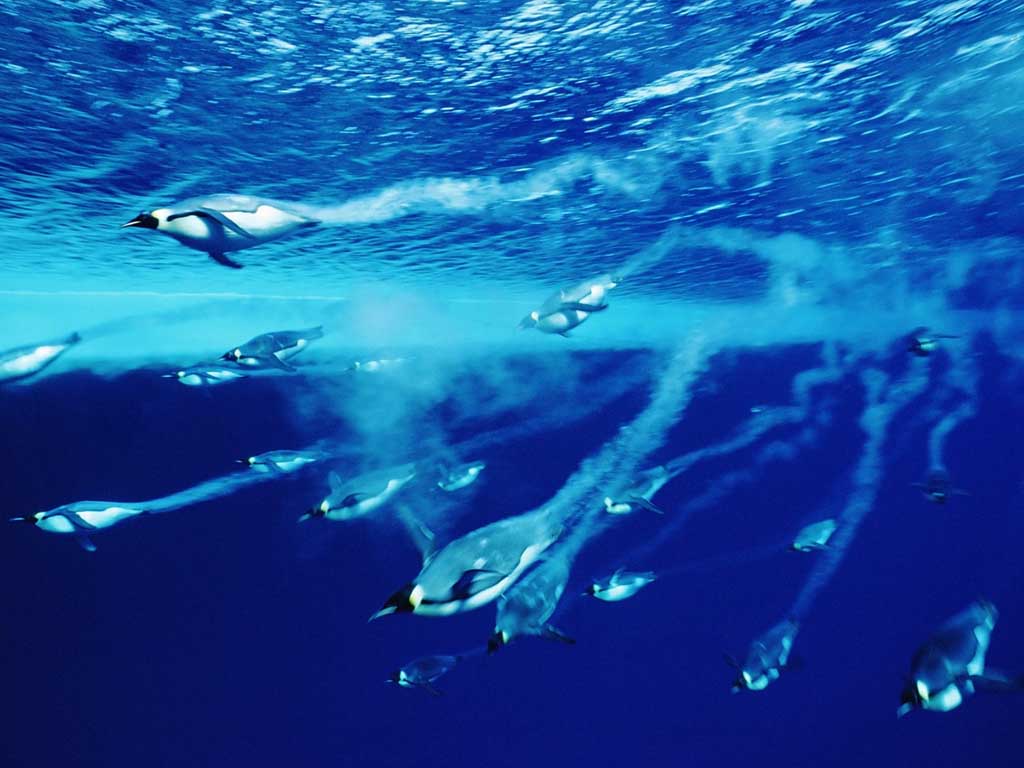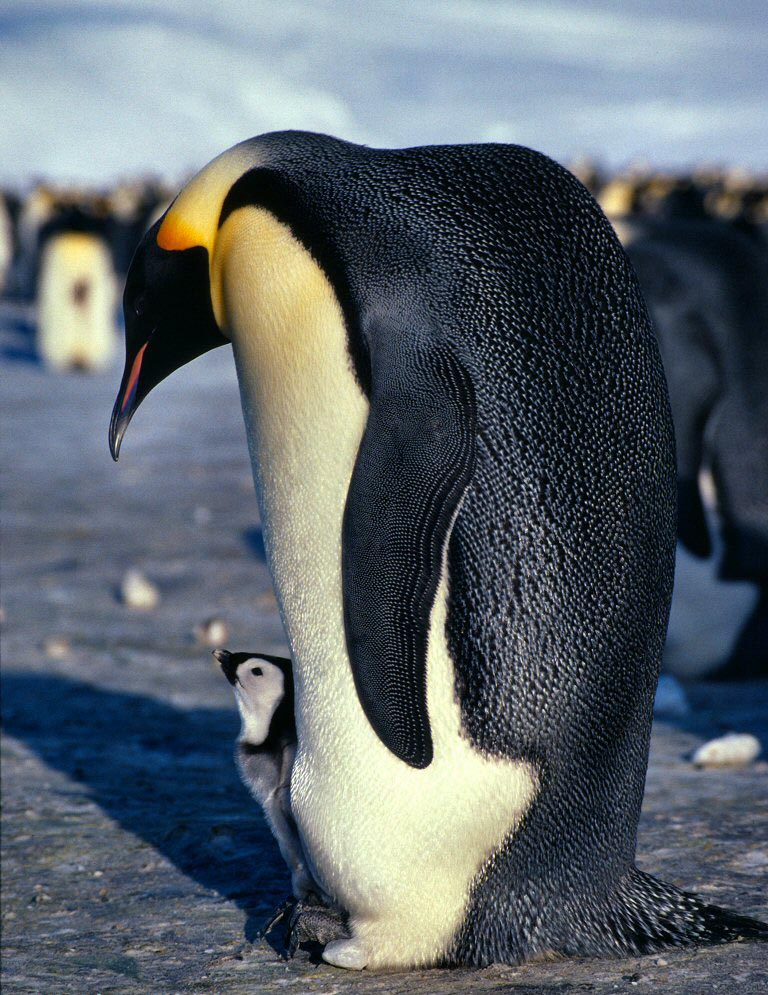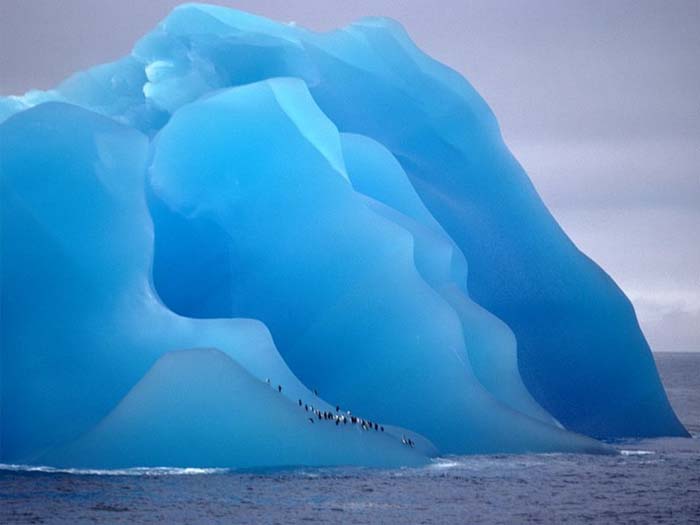The Emperor penguin Aptenodytes forsteri is one of only two species of penguin that inhabit the Antarctic continent: Adelie penguins breed there in summer, while Emperors breed in winter.
Emperors are the largest of all penguins, easily recognised by their black cap, blue-grey neck, orange ear-patches and bills and yellow breasts. There is a thick layer of blubber under the Emperor’s skin. In their chicks, it is covered by a dense layer of woolly down. An overlapping coat of feathers grows over this layer. The outer feathers are covered in a greasy waterproof coating. It’s mainly the layers of feathers that keep the water off the penguins’ skin and help retain heat. The feathers are highly specialised and modified compared to the feathers of flying birds. For example, they are smaller, stiff, and lanceolate. There are far more feathers on a penguin than on a flying bird of comparative size. The feathers of an adult have tufts of downy underfeathers attached to the bottom of the rachis (feather shaft). So down and main feather are all part of the same structure. Feathers are very complex structures made of keratin (same as our hair and finger nails) that is naturally water-repellent. What birds – and particularly penguins – need to do is keep their feathers in good condition so they remain supple and properly aligned . Only when feathers are aligned properly will they keep out the water. Birds have a gland, the preen gland, at the base of their tails that produces a very complex and chemically complicated preen oil. It is more like a conditioner for feathers than grease.









